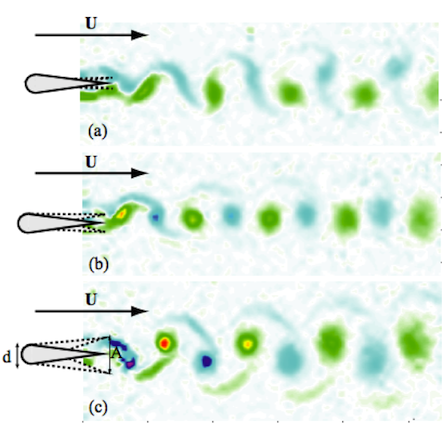
G. Bertrand, T. Aurégan, B. Thiria, R. Godoy-Diana, M. Fermigier
Physical Review Fluids 10, 074401 (2025) * Editor’s suggestion
doi: 10.1103/PhysRevFluids.10.074401
preprint: arXiv:2412.12878
The competitive practice of sailing and windsurfing has seen a recent revolution with the introduction of new appendixes of hydrofoils that generate lift and keep the board or the boat out of the water for a sufficiently high sailing speed (∼3 m/s) . This allows one to increase the speed significantly because the wave drag and the hydrodynamic drag are almost suppressed. These innovations include the new iQFOil class introduced for the 2024 Olympic Games. During race starts or in low wind conditions, particularly after maneuvers like tacking which consist of turning the bow toward and through the wind to go upwind, windsurf athletes employ a technique called pumping to initiate or maintain foiling. This involves rhythmically adjusting the sail’s angle relative to the wind through a movement where the athlete moves their center of mass up and down, causing the sail to oscillate and provide intermittent propulsion to keep the board above water (see figure). We present an experimental study with a symmetrical shape of sail where a pitching movement is applied for various frequencies and amplitudes in a wide range of mean incidence angles to mimic the behavior of a sail under real sailing conditions, especially upwind conditions. This study focuses on the coupled effect of the kinematic parameters of pumping (flapping frequency and amplitude) and the mean incidence angle between the mean chord of the sail and the direction of flow, in a context of application to competitive sailing.














